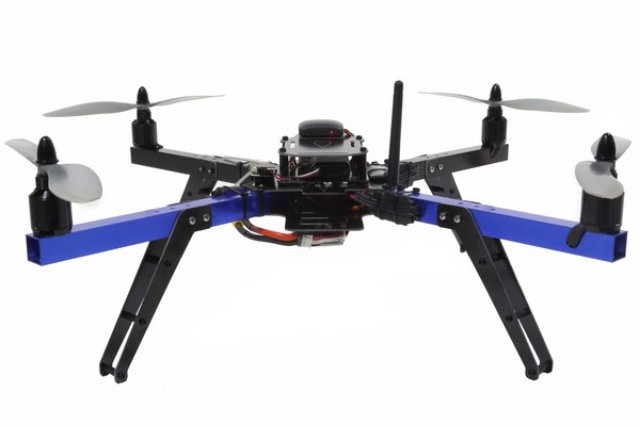UAS soon could help Tijuana authorities monitor traffic, evaluate accident scenes, detect landslides and control wildfires. Mayor Jorge Astiazarán said this week that he’s preparing to buy several small, unmanned aircraft for the city, making Tijuana one of the first municipal governments in Mexico to use UAS.
“The main idea is that they help with surveillance of the city,” Astiazarán said in an interview. “This won’t just be used for public safety, but to see how the city is growing, discover clandestine dumps … monitor any land movement in a remote area that has gone undetected.”
The purchase is part of the city’s effort to increase efficiency through technology. So far, the only municipality in Mexico that uses remotely piloted aircraft is Puebla in central Mexico, which launched a UAS programme in October after acquiring three small unmanned aircraft.
On the night of November 30 in Tijuana, images taken from a UAS hovering above City Hall were displayed inside the courtyard where hundreds gathered for Astiazarán’s swearing-in ceremony. The mayor stopped short of mentioning UAS in his inaugural speech, but he pledged to make Tijuana a safer city “using all the tools that are within our reach, both human and those that technology offers us.”
Astiazarán said he has been in negotiations with 3D Robotics, a company with engineering offices in San Diego, business and sales offices in Berkeley, and a manufacturing plant in Tijuana.
The first step involves the purchase of two 3DR Ready-to-Fly Quad UAS. Each weighs as much as 6.6 pounds and can carry up to 2.2 pounds, said Guillermo Romero, general manager of the company’s plant in Tijuana.
The UAS is primarily equipped for aerial photography. The images it captures can be used to quickly and inexpensively produce 3-D maps, Romero said.
Alejandro Lares Valladares, Tijuana’s new public safety secretary, said that the UAS could supplement a network of video surveillance cameras first installed in 2006 and monitored through a command center in the city’s Río Zone. Officers would be trained to operate them and read images sent to the command centre, enabling them to help officers on patrol in problematic areas, Lares said.
Astiazarán said two officers have been selected for training, and 3D Robotics has temporarily loaned the city some UAS while it works to secure funding to purchase the units. Each 3DR Ready-to-Fly Quad costs $599, but that does not include the accompanying video cameras or remote controls.
As Tijuana struggles with a heavy debt, its 2,190-member police force needs to find ways to improve service without heavy spending increases.
“What we want to do in this administration is evolve technologically,” he said, adding that he’s also hoping to increase the use of electronic tablets and smartphones to improve communications and speed up response times.
Eduardo Vázquez Rossainz, director of Puebla’s Center for Emergencies and Immediate Response, said the municipality’s three UAS can fly up to 820 feet above the ground and carry up to 24 pounds each. They have been used to monitor flooding and oversee mass gatherings.
In Mexico, the UAS programmes in Puebla and Tijuana have yet to stir up the level of public controversy that’s taking place in the United States, where Congress has required the Federal Aviation Administration to open up domestic airspace to UAS by 2015. Current regulations prohibit use of UAS in populated areas or near airports.
There are new laws affecting the operation of UAS in several states, but California has not passed any such legislation, said Allie Bohm, who monitors the issue for the American Civil Liberties Union.
“That’s the sort of thing that we want folks to be able to do — use it to fight wildfires without collecting information and trolling around,” Bohm said. “We want to put in a system of rules so that UAS are prohibited from mass surveillance.”
While Mexico has no laws governing use of UAS, Romero of 3D Robotics said the company is urging those who purchase them to abide by international standards established for operators of remotely controlled model airplanes. Those rules require the vehicles to remain in the operator’s line of sight, not fly over private property and not soar above 400 feet, he said.
Source: UT San Diego

